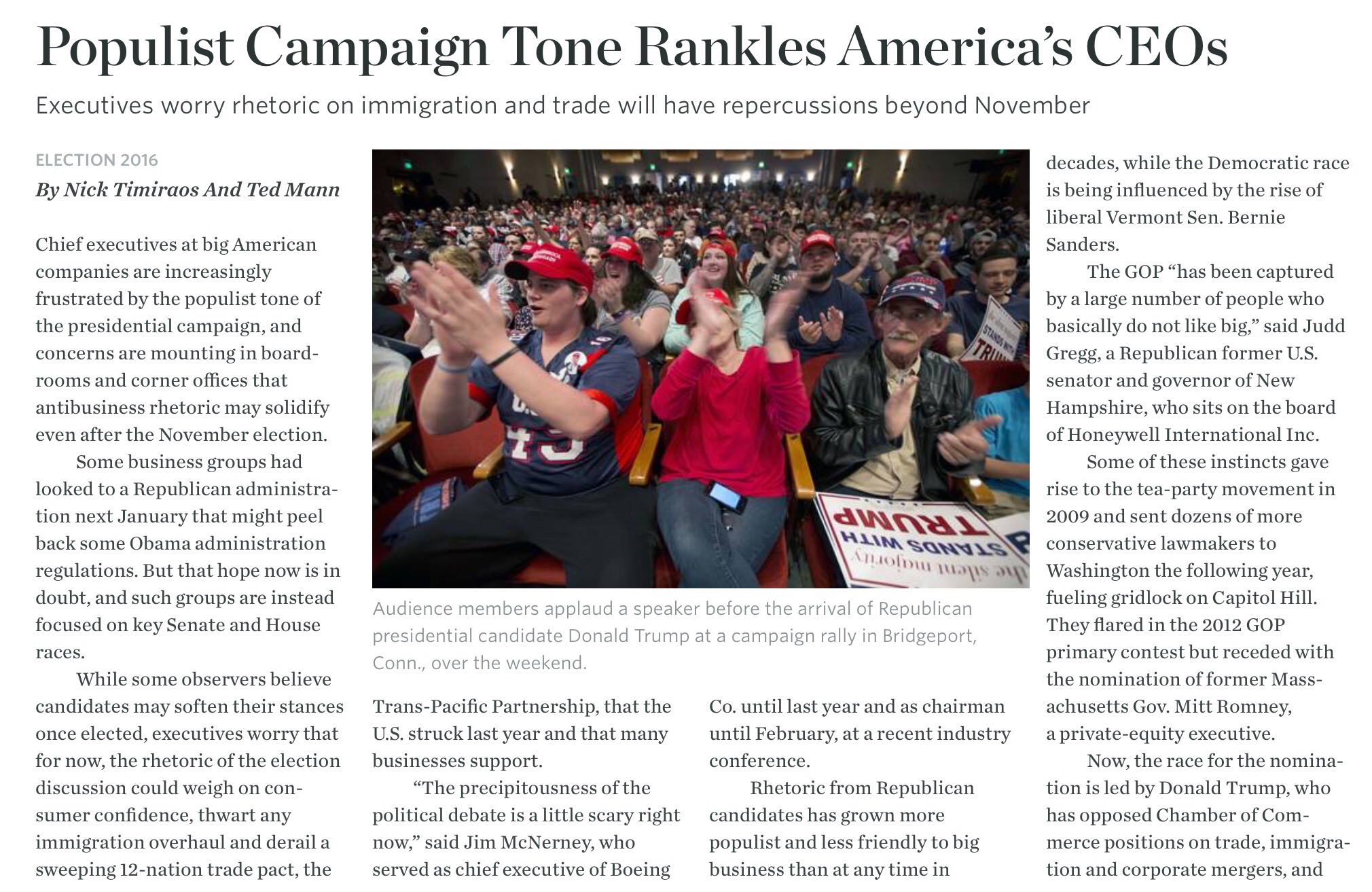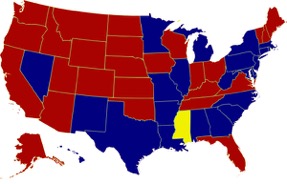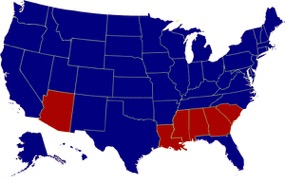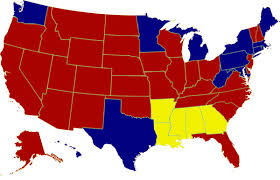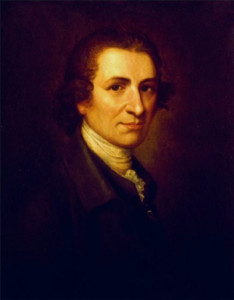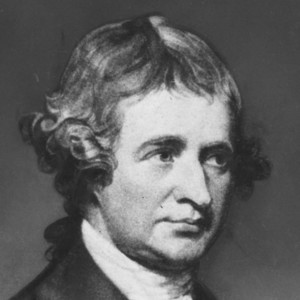I wrapped up my Labor Economics Lecture last Thursday (2016-04-28). We devoted the final two lectures to Jeremy Rifkin’s 1995 classic End of Work. End of Work explores the time-honored Malthusian warning that population will outstrip our technical capacity to support that population. In one of its contemporary versions, competition drives competitors to drive down factor costs, which they do by laying off workers. This is because technological innovation allows us to produce the same volume of goods with less labor time, thereby lowering factor costs. The result is that we produce more with less and unemployment and underemployment skyrocket.
My principle objection to the new Malthusianism is that it treats technology as an independent variable, the “Ghost in the machine” in Gilbert Ryle’s memorable phrase, which subsequently provided Arthur Koestler with the title for his psychological account of personal, social and political conflict. Even though there is some truth to Jacques Ellul’s (or Martin Heidegger’s) account, where techne̅ is held to enjoy a kind of ghostly objectivity and independence, this ghost in the machine is composed by the very practices, our practices, that it then renders or seeks to render obsolete. So, where Jeremy Rifkin imagines that we might turn the efficiencies of technological innovation to our own advantage, I argue that this God we have created is hard-wired within, immanent to and constitutive of our social form, making it necessary, if we wish to dismiss this God, to transform the ways our social lives are mediated. But first the economics.
MRTS (marginal rate of technical substitution)
Of course, producers do not adopt innovations when these innovations fail to cover their margin — i.e., when these innovations do not allow producers to enjoy returns higher than the returns they enjoy by employing labor. In this way, innovation has the effect, holding other variables constant, of producing more with less; in this case, less labor. According to the standard argument, over time innovation gives rise (1) to unemployment; (2) lower prices; and (3) shifts in the labor market toward more labor-intensive, lower-paying sectors of the economy (e.g., service jobs). Drawing upon data principally from the post-war epoch up to 1993, Rifkin shows the effects that the latest information and automating technologies have had on labor markets: driving down wages and benefits, bunching high wages at the top centile, but also generating higher unemployment. Twenty years later it is clear that wages and benefits have declined precipitously and also that higher wages now bunch toward the high end and among a far smaller number of workers than during the height of large scale industrial production. Yet, as the latest employment figures show, information and automation have not precipitated higher unemployment.
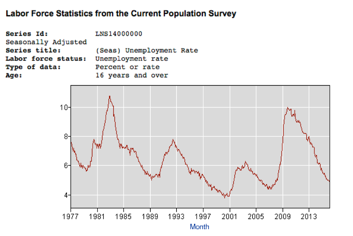
Yes, there was a sharp increase in unemployment from 1980 to 1983, and again from 1990 to 1992. Yet, at the very moment that Rifkin was researching his book, to the time it reached bookstores in 1995, unemployment was in a sharp decline that continued through the Clinton years and only bottomed out, at a record 4%, when the tech bubble burst, which was followed almost immediately by 9-11 and the ideologically-and politically-driven economic policies of George W Bush. Still, 1992-2001 was a good run. And it tore the heart out of Rifkin’s argument.
Where did Rifkin go wrong? One might suppose that Rifkin fundamentally misunderstood what is called the marginal rate of technical substitution, the rate at which any sector substitutes machines for workers, represented mathematically:
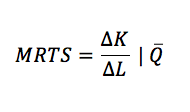 Ehrenberg & Smith, Labor Economics, (Pearson 2015) p. 87
Ehrenberg & Smith, Labor Economics, (Pearson 2015) p. 87
where ΔΚ represents the change in capital, ΔL the change in labor, and where quantity (Q) is held constant.
This is still the Deus absconditus, the hidden God, and yet we can already discern the vague outlines of the full deity. If our productive practices are necessarily coordinated with the tools we use to produce goods, and if our own fate is in some manner tied to the character of these tools, there is a risk that these tools will come to govern us, shaping not only what we can make, but what we will make, and, indeed, making us in their image as we make them in ours.
This mutually constitutive character of human being and the world that we engage lies at the heart of classical and, much more, neoclassical economics. This core relationship is clearly visible in GWF Hegel’s application of the MRTS model:
At the same time, this abstraction of one man’s skill and means of production from another’s completes and makes necessary everywhere the dependence of men on one another and their reciprocal relation in the satisfaction of their other needs. Further, the abstraction of one man’s production from another’s makes work more and more mechanical, until finally man is able to step aside and install machines in his place (GWF Hegel, Philosophy of Right, §198).
Generally, we do not think of Hegel as an economist and, yet, the vast bulk of Hegel’s Philosophy of Right entails his critical engagement of classical British and French economic theory. So it is not very surprising that Hegel’s version of the marginal rate of technical substitution bears a marked resemblance to Adam Smith’s a generation earlier. In Book I, Chapter 1, of Wealth of Nations, Smith invites us to consider the good fortune of a fire-engine boy:
In the first fire-engines, a boy was constantly employed to open and shut alternately the communication between the boiler and the cylinder, according as the piston either ascended or descended. One of those boys, who loved to play with his companions, observed that, by tying a string from the handle of the valve, which opened this communication, to another part of the machine, the valve would open and shut without his assistance, and leave him at liberty to divert himself with his play-fellows (p. 20).
Even assuming the truth of this improbable story, it is almost certain that the boy’s invention did not “leave him at liberty to divert himself with his play-fellows.” The boy, after all, was not working for his love of fire-engines. The boy was compelled by necessity to supplement his family’s income. He worked to eat.
Oddly missing from both A Smith’s and GWF Hegel’s stories is any mention of competition. Happily, our economic models are fully equipped to grasp competition. Yes, it is true, Firm A innovates in order to cut its factor costs. And so long as its patent holds good Firm A will enjoy a marginal advantage over its competitors. Where they produce 100 units with the old mix of 50% labor and 50% machinery, for example, with its new technology Firm A is able to produce 100 units with the new mix of 75% mechanization and 25% labor. Or, should it prefer, Firm A might wish to produce 1000 units using the same volume of labor as before.
Eventually, however, Firms B, C, D, n . . . also adopt (or, more likely, acquire a license for) the new technology, therein eliminating the 25% advantage that Firm A originally enjoyed. Once this happens, all firms within any given sector are once again devoting the same mix of technology and labor, none enjoying an advantage. In effect what this means is that the marginal product initially won through innovation relative to labor disappears, therein increasing the marginal value of labor relative to technology. Indeed, were this not the case, it would be impossible to account for the unending drive toward technological innovation. Absent competition, compulsive innovation would cease. As it is, each firm within any sector must maintain parity with every other firm, lowering factor costs relative to units produced either by driving down wages and benefits or increasing the marginal value of its human capital, or both.
And this means that there is an inevitable upward slope to the cost of technology relative to labor. Labor will always, eventually, prove cheaper than any technology not in spite of but because of innovation; or, rather, because the goal of innovation is not to set the fire-engine boy at liberty, but to reduce factor costs. There are some things that even machines will not do, eventually.
Technological innovation thus exhibits something of a sysiphean character. We feel as though we are reaching the top of the hill. In fact, necessity is driving us to the top of the hill. But rather than reaching the summit, we find it forever retreating behind the horizon. It is there, we assure ourselves. Some day we will reach it. That is the promise. But every plateau becomes a new base station. And so we set out again.
It was ever thus. “From the beginning,” declares Rifkin in the opening line from his classic.
From the beginning, civilization has been structured, in large part, around the concept of work. From the Paleolithic hunter/gatherer and Neolithic farmer to the medieval craftsman and assembly line worker of the current century, work has been an integral part of daily existence. Now, for the first time, human labor is being systematically eliminated from the production process (3).
And, yet, if our paleo-anthropologists are to be believed, such was hardly the case. In the beginning, human beings worked three, perhaps four hours, on average every day (see N Bird-David, “Beyond the Original Affluent Society — A Culturalist Reformulation,” Current Anthropology 33:1 25-47). Only in the unfortunate event that one family or clan successfully requisitioned the labor of others, that their labor was impounded by the leaders of the riverine and valley communities (e.g., the Mississippi, the Nile, Mesopotamia, the Yangtse, and Ganges); only in such instances was life “solitary, poor, nasty, brutish and short,” to quote Thomas Hobbes’ familiar line from Leviathan. The vast majority of the earth’s communities escaped into the hills, deserts and jungles precisely to escape from the nasty, brutish, and short lives endured by their laboring cousins in the valleys. Hebrew sacred text, Bhagavad Gita, and Gilgamesh are packed full of stories of this primordial conflict between daring and independent mountain people and their docile and compliant valley cousins. The story of the Exodus thrills because it charts the story of valley slaves escaping once again into the desert. No one is left wondering on whose side stands the divine in this story. It is a story that rings true throughout the Bhagavad Gita and among mountain people everywhere, the Hmong, the Min, the northeastern and southeastern communities of pre-columbian north America. Over a half-century ago, the renegade anthropologist Marshall Sahlins faulted his colleagues for their neolithic prejudice. Work was never the chosen organizing principle of any community. Rather was it always the principle imposed upon other communities by powerful families and clans.
Indeed, it was only with what the late Harvard scholar David Landes calls the fourteenth century’s “revolution in time,” when, for the first time, abstract, equal units of time were tied to productive human activity, that entrepreneurs began to see how value and time could be tightly calibrated in such a manner as to make material production serve value instead of the reverse. No wonder then that prior to this revolution, time, literally, was going nowhere. As the revolution in time spread throughout Europe, however, and from Europe into the rest of the world, over three short centuries in the vast sweep of 2.5M years, time suddenly was jolted into motion. Finally, based uniquely on the calibration of time, labor, and value, history was going somewhere.
Living the Dream (for some)
Still, on the point central to his thesis — that innovation and labor are tied to one another — Rifkin is surely right. Unemployment in the 1980s followed a pattern similar to the pattern we find in the first three decades of the twentieth century. At the turn of the last, which is to say the 19th, century producers discovered that they could not simply produce at whatever volume their technology allowed and expect supply to create its own demand. Mechanization allowed the production of an unprecedented volume of goods. Markets flooded with goods sent prices plummeting. Producers discovered that competitors were always ready to reduce their prices marginally in order to generate a sale. To generate greater sales and clear their inventories, successful producers began advertising directly to consumers. Yet, since competition placed downward pressure on wages, consumers found it difficult to absorb the volume of goods being pumped out by the new assembly-line factories. Nevertheless, in light of the seemingly endless growth potential held by technological innovation, this wage barrier found a ready solution in the credit markets of an as yet unregulated banking and finance industry. Do you need credit to purchase new items for your home? No problem. Sears finance is there to help you. Are your receipts insufficient to expand your production facility? No problem. Interest rates are so low that you can have your cake and eat it too.
Chapters Two and Three of Rifkin’s classic — “Trickle-down Technology and Market Realities” and “Visions of Techno-Paradise” — are among his best. They detail the rise of the consumer market, the Great Depression and its origin in overproduction and unregulated banking, and the persistent, yet, never fully realized promise of a paradise built on innovation. The only modest revisions I would make in Rifkin’s account have to do with his all too hasty dismissal of the techno-paradise. No doubt, trickle-down technology will not have benefited the vast majority of those who read Mr Rifkin’s book. My students, however, were/are among its few true beneficiaries. They are paying a $16K per semester tuition. They are spending most of their days reading, discussing, learning, and growing — living off of the efficiencies produced at the bottom of the income hierarchy by workers whose wages and benefits attest loudly to the marginal rate of technical substitution. Meanwhile, my students are living the dream. And when they graduate, they will walk into high paying, secure jobs reserved for graduates from families sufficiently well-endowed to win them degrees from America’s top institutions. So, while it is surely true that those at the other end of the income hierarchy, who are condemned to meaningless, repetitive, mind-numbing work that “even machines will not do,” are not likely to see the benefits, but only the disutilities of technological innovation, it is also true that there are some — my students among them — for whom the techno-paradise is not dream, but rather a market-generated reality.
Innovation, Efficiency, and Competition
Clearly, however, these two realities — one at the top, the other at the bottom of the income hierarchy — are not only both true, but both related. Without the one, there cannot be the other. That is because the very goal of technological innovation is increasing returns on investment. Innovation absent this incentive makes no sense.
Yes, to be sure, prior to the fourteenth century — that is, prior to the emergence of capitalism as a coherent social form — individuals did innovate. But not in a manner that could actually take hold of and drive history and society forward. Innovations in agriculture or architecture or astronomy left virtually no lasting impact on the peoples or places where they first appeared. They were driven by the genius or greed of individual families or dynasties, which from time to time amassed mountains of material wealth, erected huge architectural marvels, requisitioned inconceivably large armies, endowed libraries and schools, built statues and monuments, employed artists, scholars and musicians, and, if terribly successful, even created civilizations. But, precisely because these achievements were tied to individuals or to dynasties, precisely because the impetus for their innovation was not socially generalized and universal, but was instead particular, local, and episodic, these gains could, in a moment, be lost and forgotten in the fog of time.
What distinguishes innovation after the fourteenth century, after the emergence of capitalism, from the episodic and ephemeral innovations of the past, is that innovation has become immanent to and constitutive of our very social being. Innovation is not one among many things that we do. Innovation is who we are. It bends all of our laws and regulations in its direction. It accounts for the periodizations of our epoch. It assumes into itself our very moral being, helping to explain how and why we are not only willing, but even ready to count as virtuous our abandonment of the orphan, the widow, the hungry and homeless, “for their own good.”
Innovation explains why we can send missiles to distant planets and explain the atmospheric composition of planets circling distant stars. Our grasp of physics, both the very small and the very large, is predicated upon innovation. Our minds — what we think — correspond with unprecedented accuracy to a material world that we can manipulate knowing with near absolute certainty how that world will respond to our manipulations. It is because innovation is at the heart of everything we do that, with absolute certainty, even if we cannot put a stop to general systemic failure of our environment, we will know precisely why and how and when it is taking place.
There is, of course, something of Mary Shelley’s Doctor Frankenstein or Goethe’s Faust to all of this. Have we not invented the very conditions — the very world — that now enables us to know in infinite detail and, therefore, to take full command of all of creation? Do we know what we are doing? Are we ready to be gods?
But the gods of Shelley or Goethe are too easy to deconstruct and dismiss. These are not the gods, whether ourselves or our creations, that we have in mind. So, let us press on to G-d.
G-d and the Social Sector
In the final four chapters of his volume, Rifkin outlines “the dawn of the post-market era.” Recall how Rifkin inflects technological innovation; recall how, following Smith and Hegel, he isolates technological innovation from the competitive value frame by which innovation is driven. Rifkin’s isolation of innovation from the incentive structure by which it is motivated also brings him to isolate the social and cultural forms of our society from this incentive structure. This isolation, we have shown, is based upon a failure to adequately theorize the incentive structure motivating technical innovation — namely the relationship between the value of labor, on the one hand, and technology on the other. The simple MRTS formula, taken in isolation, makes it seem as though investors are eager to produce a given quantity (Q) at a lower cost, as they most surely are; but only relative to other producers within a given sector. As an investor, my ultimate aim is to maximize the return on my investment, and, should another producer prove better equipped to deliver, I will quickly shift my capital to their enterprise. Once, however, the savings brought by innovation are shared across a sector, its value to investors disappears. Technology, in other words, is not an independent variable that might well outlive the incentive structure immanent to and constitutive of the social, cultural, legal and institutional forms in which it is embodied.
But, let us suppose for a moment that the leisure generated by technological innovation was independent from the social formation that has produced that innovation. In that case, it would prove a relatively straightforward technical matter to “capture” those efficiencies and transfer them down the income hierarchy and outward from the plant into society at large. This transfer of efficiencies or leisure to individuals whose labor innovation has made redundant is what Rifkin calls the social sector. And, on some level we can actually see this sector at work in the core states of the European Union, where, in fact, political will and institutional integrity have made it possible to transfer industrial efficiencies downward and outward where they make healthcare, housing, education, security, and leisure affordable for all. Nevertheless, no one in Europe is under the illusion that this transfer of efficiencies entails anything less than a substantial public intervention into private markets and therefore a great drain upon the efficiencies produced by these markets. Figures are published annually calling attention to the immense and growing gap between US and EU productivity, figures upon which European investors seize in their efforts to privatize and deregulate their own markets. Throughout Europe, such efforts are enjoying increasing success.
Yet, even where efficiencies are sacrificed to satisfy perceived social needs, the fact remains that these social needs are not inversely, but are rather directly related to the efficiencies transferred to mitigate their damage to society. When we substitute technology for labor, we do so only to maximize return on investment. In the short run, this substitution of technology for labor makes labor redundant. Nevertheless, in the long run — when a technological innovation has been generalized — labor is invariably called back in since now investors no longer enjoy the advantage delivered by the innovation and since therefore the labor-technology mix has arrived at a new equilibrium.
The General Will and the Social Contract
The truth therefore is that technological innovation does not free us, but only prepares us for another round. If we like, we can of course divert some of our efficiencies to the social sector. But on what grounds? In another society — not our own — we would have an answer ready for this question. We would transfer efficiencies to the social sector because we have a command from our God, not only in the Holy Qur’an or the Bible, but also in our hearts telling us that advocacy for the widow, the orphan, the hungry, and the poor is part of our identity.
As recently as the fourteenth century, our divine obligation to serve those less fortunate than ourselves was, if not followed, at least universally acknowledged. Beginning in the fourteenth century, however, in western Europe, natural philosophers and theologians alike began to feel not only that the sacred books in their possession, but also the feelings in their breast, were out of sync with how the real world worked. In the real world — a world increasingly governed by work efficiency and technological innovation — concern for those “less fortunate” presented risks for moral hazard. Would vagabonds and vagrants still work if cared for? Would they not simply become free riders, eating into and taking from hard won efficiencies? Besides which, the books that advocate care for the poor, the homeless, the widow, and the orphan; are not these books simply bundles of pre-scientific moral speculation and superstition? What, in effect, the so-called religious were asking us to do was to sacrifice the good of the entire community, built upon ever greater efficiency, wealth, and economic growth, for the benefit of those too lazy or too morally reprobate to bear their fair share. Indeed, do we not offer them greater assistance by denying them what they might otherwise earn through hard work and sacrifice?
When Jeremy Rifkin invites us to carve out and protect a social sector, to forge a new social contract, he is assuming that doing so is a universal good, self-evident and recognized by all. What has grown clear, however, since the fourteenth century is that this so-called “good” is in fact a private, particular interest. “If your God tells you to ‘help’ the poor in this way, then you should do it. But don’t mistake the voices you hear in your head for a universal command heard by all.”
Unfortunately, the question of what does and what does not constitute a “special interest” has become increasingly politicized over the past half-century. Nevertheless, if we take efficiency and its drive for technological innovation as our point of departure, then it quickly becomes clear that the universal — the legal, regulatory, and institutional framework that governs and mediates social relations among all communities and nations — is the well-regulated, legally binding and enforced global marketplace among all private parties in aggregate. This, in essence, is the importance of Robert E. Lucas Jr.’s global growth chart, which documents the gradual, but inevitable integration of all earthly communities into a single, rational, comprehensive market:
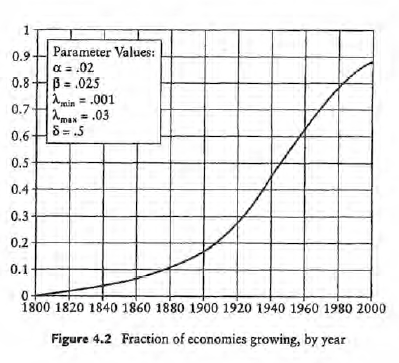
What is the universal fiber that holds all of us together? What is the de facto social contract we have all made with one another? What is the legal, regulatory, and institutional framework that everyone, or nearly everyone, agrees is universal?
The Real World versus Superstition
The question I am raising here is not whether neoliberal economic theory or the so-called “Washington consensus” is moral or right in some abstract, transcendental way. The question I am raising concerns the complex web of understandings, assumptions, customs, beliefs, laws, institutions and regulations that mediate our collective social being? What is it that drives our actions and inspires our obedience — universally, self-evidently, inevitably, upon threat of the worst possible consequences? Prior to the fourteenth century, no one, literally no one counted moral hazard a central organizing principle whether for policy or for individual action. Now such considerations are not simply the law of the land, but of the globe.
This is how the real world works. Markets work by removing distortions, by eliminating private customs, purely local rituals, beliefs, institutions, and practices. They work when we are all subject to the same universal laws, regulations, and information streams. They work therefore only to the extent that we abandon our particularities (or, at the very least, keep them private) and embrace the universal. No individual mentioned or even contemplated in the Upanishads, the Bhagavad Gita, the Holy Qur’an, or the Holy Bible — no one could have or even would have sent a missile into outer space. Such a thought would have been incoherent to them. What was inside the heads of these individuals bore almost no relationship to the actual composition or workings of the world. Which is why everywhere, no matter where science is known and practiced, the beliefs and rituals found in these anachronistic texts are universally known and dismissed as “superstitions.” If then the very composition of the universe, not only our grasp of that universe, but our ability to manipulate its elements and bend them to suit our needs, is predicated upon our search for ever higher returns on investment and upon the innovations and efficiencies this search has brought, then why might I want to re-engineer the work week (Chapter 15), forge “a new social contract” (Chapter 16) or empower a new third (“social”) sector (Chapter 17) whose only function, it would appear, could be to reduce or eliminate the efficiencies and knowledge won by innovation?
Put in the form of a question, is a social form that is grounded in the production of efficiency consistent with a social form that aims at emancipation? Are these two compatible? Can they co-exist?
The Universal
What we are circling around here is the question of ontology, not simply of our being, but of the being that holds us together, that mediates all of our relations with one another, guides us, inspires us, and provides us with our basic orientation in the universe. The problem with Jeremy Rifkin’s counsel is that it presumes an ontology that no longer exists. In his ontology, we would recognize the value of spending more time with our families.
Between 1960 and 1986, according to one nationwide study, the amount of time parents were able to spend with their children declined by ten hours a week for white households and twelve hours for black ones. The decline in parental supervision has created an “abandonment” syndrome (234).
The solution, according to Rifkin, is to trade work for leisure, so that we might spend more time with our children. Our efficiencies, Rifkin believes, will be transferred to free time and our free time will be spent with our families, our children. But this ignores how the efficiencies themselves — indeed the very notion that our lives should be guided by the pursuit of efficiency — were themselves purchased at the expense of our families, our traditions, our peculiar local customs, habits, and liturgies. Rifkin’s solution presumes that there is a natural, universal, and universally recognized drive to “turn back the clock,” extract ourselves from the laws, regulations, and networks that now govern our world and our knowledge, recover what was lost, and set out anew. Rifkin thus places himself in the role of Paul Klee’s Angelus Novus, which Walter Benjamin once described:
“Angelus Novus” shows an angel looking as though he is about to move away from something he is fixedly contemplating. His eyes are staring, his mouth is open, his wings are spread. This is how one pictures the angel of history. His face is turned toward the past. Where we perceive a chain of events, he sees one single catastrophe which keeps piling wreckage upon wreckage and hurls it in front of his feet. The angel would like to stay, awaken the dead, and make whole what has been smashed. But a storm is blowing from Paradise; it has got caught in his wings with such violence that the angel can no longer close them. This storm irresistibly propels him into the future to which his back is turned, while the pile of debris before him grows skyward. This storm is what we call progress (Illuminations 1968:257-258).

In his reading, Benjamin, who committed suicide while fleeing the Nazis on the border between France and Spain, portrays the angel appearing in the modern age as an ontologically isolated, idiosyncratic figure, no longer fighting a losing battle, but merely witnessing the detritus accumulate before him. Rifkin wants us to listen to this angel, to see and understand that to which the angel is bearing witness. But, unlike Benjamin, Rifkin believes that the angel occupies a universal position, transparent and self-evident to all. Benjamin, by contrast, knows that the whole ontological thrust of the modern epoch is with the storm blowing from, not to Paradise. It is in this storm that our ontological future, our purpose, our nature lies.
Here our guide must therefore again be Hegel. For, although Hegel overlooked the critical role that competition must play in the marginal rate of technical substitution (MRTS), his grasp of the macroeconomic implications of MRTS was nothing short of inspired. Much as, a century and a half later, Chicago economist Robert E. Lucas Jr. traced the comprehensive, rational, universal integration of all communities into a single growing market, so Hegel traced this same convergence back to the beginning of time. So profound, in fact, was Hegel’s grasp of this universal movement that the neoliberal philosopher Francis Fukuyama made Hegel the centerpiece of his reinterpretation of global history: The End of History and the Last Man. No slight to Fukuyama, but the original is better than the copy.
In his Phenomenology, written a good thirteen years before his Philosophy of Right, GWF Hegel described the kind of comprehensive, integrated, all-encompassing, all-consuming, all-knowing social system capable of generating the kinds of efficiencies that a decade and a half later he believed might allow us to step aside and install machines in our place. In this social system, all particularities would either have been subsumed under the universal or would have been eliminated. In this social system, what we know about the universe (in our heads) would correspond to the material composition of the universe. Hegel called this social form the “World Spirit” or Weltgeist. This spirit, thought Hegel, had been wending its way through history from the dawn beginnings of the human race, gathering those bits and pieces of knowledge and truth that it found useful, transforming them so that they would be adequate to one another, and depositing them again in history, in communities, among people, only to be gathered again, processed, and redeposited. Those pieces the World Spirit found useless it discarded. Gradually, however, the World Spirit created a world that corresponded precisely to our thinking about that world. It created a world where Mind and Matter were completely adequate to one another.
That world is our world. We who understand it — who really understand it — embody the spirit Hegel was trying to describe. Hegel’s summary of the process described here is virtually unintelligible. In it, Hegel writes about a self-moving substance, which is to say, a truly autonomous and self-aware agent or actor, creating, but then submitting itself to the constraints of the world it has created, before returning to itself and, as Hegel puts it, completing the circle. This spirit, Hegel believes, is God.
Further, the living Substance is being which is in truth Subject, or, what is the same, is in truth actual only in so far as it is the movement of positing itself, or is the mediation of its self-bothering with itself. This Substance is, as Subject, pure, simple negativity, and is for this very reason the bifurcation of the simple; it is the doubling which sets up opposition, and then again the negation of this indifferent diversity and of its anti-thesis [the immediate simplicity]. Only this self-restoring sameness, or this reflection in otherness within itself — not an original or immediate unity as such — is the True. It is the process of its own becoming, the circle that presupposes its end as its goal, having its end also as its beginning; and only by being worked out to its end, is it actual (GWF Hegel, Phenomenology §18).
The Economic reception of Hegel
Initially, the empirical, microeconomic bent of nineteenth century economic theory brought British and French economic theorists to dismiss Hegel’s philosophical musings as little more than the ravings of a German romantic. It was only therefore in the twentieth century when the comprehensive character of the global system could no longer be ignored that economists began to acknowledge the validity of Hegel’s criticisms of his French and British counterparts. And surprisingly, it was at the University of Chicago, the heart of neoliberal economic theory, that economists began to show how economic rationality had come to shape all decision-making — from race and gender discrimination in hiring, to the minute workings of the private household, to individual religious and spiritual preferences — in the most advanced capitalist societies. To be sure, even in 2003, when Lucas published his Lectures, there were still a few outliers, communities that had not yet eliminated their traditional religious practices and inefficient, non-productive traditions. But, by and large, which is to say among over 90% of the world’s population, the system to which Hegel called attention and, more importantly, the spirit driving this system, had come to dominate all corners of social life and culture. Were communities all of a sudden to attempt to build their lives again around the Bible, the Upanishads, or the Holy Qur’an, the disconnect would become immediately visible between their purely local, tribal deities and the universal spirit, the self-moving substance that is Subject, that in fact, objectively, governs all things.
But this also puts the lie to Rifkin’s attractive, but fantastic hopes for a third, social sector. Such a sector and, more importantly, the public, political will necessary to make it law is non-existent. Even where it exists in faint outline, in certain corners of the EU, political forces are mounting an increasingly successful campaign for its reduction and eventual elimination. To the extent that a non-official, “social” sector is emerging, its form is reactionary and even fascist, aiming at the forceful subjection of public institutions and universal laws to private, particular economic, ethnic, racial and religious interests. Karl Polanyi, in 1944, called this the “double movement,” where the jungle of the marketplace invokes a counter, protective movement from the victims of this jungle. The truth, however, is much more messy, for it is precisely as the universal spirit spreads throughout the world and acquires its objectivity that, simultaneously, the elimination of truly public institutions has created a climate where private self-interest, unmediated by public law or public institutions, can be found throwing its full weight against what it believes to be “the other”: the refugee, the immigrant, the racial or ethnic or religious minority, without at all halting or even slowing the inexorable movement of the spirit to which it owes its birth and perdurance.
Hegel, it turns out, got it right. For, as he observed, it is this spirit itself that universalizes and advances through its own fragmentation and reconstitution. When this universal spirit advances throughout the world it breaks apart and fragments everything in its path, but then gathers these fragments together and places them at its service. Thus, while fascism and reactionary conservativism appear to — and indeed do — stand in opposition to the universal spirit, they are at the same time generated, pulled along and directed by this spirit. That is Hegel’s point.
G-d and Capital
Yet, at least in one crucial point, Hegel was mistaken. The spirit that he traced back to the dawn beginnings of humankind had, it turns out, a far more recent vintage, in the fourteenth century. For it was then that communities first began to calibrate productive human action with equal units of abstract time, not so that they could create more wealth, but so that they could create more value. In a huge way, this opened up a hitherto foreclosed horizon, a horizon in which elemental substances, from the smallest to the largest, can be mapped with absolute precision onto minds capable of grasping their forms. This ability is no illusion. Nor is the world opened up by capitalist accumulation, efficiency, and innovation in the fourteenth century. And, yet, when communities submitted themselves to this metric, when they chose to be guided and shaped by it, they came eventually to dismiss as useless all of the less than efficient, less than productive, less than innovative, and less than universal dimensions of human social being. These other dimensions, it should be noted, were never universal, were always local and particular. They could not have been otherwise. And this helps to explain why the discovery of the universal spirit, the “true God,” at the dawn of the nineteenth century by Hegel was such a significant find. For it explained in the deepest quasi-religious, spiritual terms the material and cultural and social and intellectual and aesthetic integration that was undeniable because it was happening right there for everyone to see.
When economists limited their analysis to “economics,” or when social scientists more generally counted capitalism “a mere economic system” (rather than a comprehensive, integrated, rational, and spiritual cultural form), they inadvertently created a lampoon that concealed this depth and breadth and complexity. Surprisingly, it was Karl Marx who most nearly grasped the God to which Hegel was calling our attention. Reaching back to the fourteenth century, Marx recognized that the isolation of abstract value from its material form of appearance created not simply a new way of reckoning value, but a new way of understanding and being human. Marx therefore retranslated Hegel’s self-moving substance that is Subject back into its original language. Value, Marx noted,
is constantly changing from one form into the other, without becoming lost in this movement; it thus becomes transformed into an automatic subject. If we pin down the specific forms of appearance assumed in turn by self·valorizing value in the course of its life, we reach the following elucidation: capital is money, capital is commodities. In truth, however, value is here the subject· of a process in which, while constantly assuming the form in turn of money and commodities, it changes its own magnitude, throws off surplus~value from itself considered as original value. and thus valorizes itself independently. For the movement in the course of which it adds surplus-value is its own movement, its valorization is therefore self-valorization. . . . Value suddenly presents itself as a self-moving substance which passes through a process of its own, and for which commodities and money are both mere forms (K Marx, Capital I:255-256).
Emancipation and Particularity
This, however, is not only the solution to the problem. It is the problem as well. For as we have seen in Jeremy Rifkin, we are inclined to isolate the cultural dimensions of our social formation from efficiency-born innovation and feel that we can simply transfer these efficiencies to the social sector willy nilly. The efficiencies and the leisure won by them are intimately related to the systemic requirement of value to expand at the expense of labor, endlessly remotivating and reinvesting these efficiencies so that, as we have seen, the fire-engine boy never actually is at liberty to go play with his friends.
Equally problematic, however, is our perhaps natural desire to construct a universal equal but counter to the dominant social form. A moment’s reflection, however, will tell us that nowhere in history has such a universal form existed except under the conditions of mature capitalism. No matter where we put down our finger in history prior to the fourteenth century or outside the creeping shadow of the capitalist social formation, all that we find is a marvelous variety of particularities, parochialisms, localisms, and provincialisms, but no universal.
Science, to some, would appear to offer itself in place of capitalism, except that, so far, and on into the distant future, the universal dissemination of scientia, knowledge or learning, requires precisely the redistribution of efficiencies downward and outward that the logic of efficiency resists. Knowledge in this form remains the unique property of privilege not in spite of, but precisely on account of the transfer of efficiencies from those who produce them at the bottom of the income hierarchy to those who consume them at the top. We who occupy this prime social real estate and who therefore know, for example, that climate change is real and that race and gender are social constructs, enjoy such knowledge because someone, somewhere has produced the efficiencies, the wealth, the leisure and, hence, the ability to “put it all together,” as they say. Redistributing these efficiencies back down the income hierarchy and outward to those by whom they were produced would require a political and institutional will that is nowhere on the horizon.
At a much deeper level, however, that which we need most desperately to recover is not the universal, but the particular. When the workers who come late to the fields are offered the same wage as those who started work at the beginning of the day (Matthew 20:1-16), we naturally question the universal principle on which such affirmative action might be grounded. Yet the fact is that the principle is that of the particular, not universal, need. Ethics, in its most basic form, is composed of no more than the living out of moral hazard in a radical manner. The child who is loved, cared for, and nurtured is likely to grow up anticipating, falsely, that others will also love, care for, and nurture her. She will come, wrongly, to depend upon the love, care, and nurture of others. When we feed the hungry, we lead them to anticipate, mistakenly, that they will be fed by others, whereas we ought in fact, as a moral duty, to teach them to feed themselves. Radical ethics, however, is based on the exception and not the rule. It holds that I teach by doing.
There is no universal rule, in fact, save to love the Lord your God and to love your neighbor as yourself. Therefore, to even search for the universal is, by the nature of the case, not to find it. For it is formed not by imposing it, not by teaching it, not by enforcing it, but by doing it, not out of principle, but out of the need of the individual standing in front of me. No one who has a fish gives another person a stone when they are hungry, except if prevented by principle from doing what is right. Science, in short, does not tell us what to do. It does not shed light on the particular, the unique, the outlier, the needy.
More ominous still are the religious zealots, from all “universal” faith traditions, who feel that their deity has delivered the blue-print of the universal uniquely to them and given them the mission of bringing all people to submit to its designs. Indeed, as we survey the world today, the likelihood of science spreading outward and downward is far less likely than, say, radical political versions of Christianity, Judaism, Hinduism, or Islam. These, their practitioners loudly proclaim, already possess the universal, and we, mere mortals, must submit to it. Moreover, the militancy of practitioners of “universal” faiths, which in times of prosperity retreats to the peripheries, gathers strength during times such as ours when the fruits of efficiency are aggregated at the top of the income hierarchy. On a much deeper level, therefore, the very production and aggregation of efficiency at the top of the income hierarchy heightens the movement not toward leisure, but toward militant reaction from those who believe themselves instruments of divine will. In the mean time, western Europe, that last remaining enclave of the social sector, is quickly disintegrating before our eyes, giving way to the very ethnic, national, and religious “universalisms” that invariably provoke hatred and conflict.
This is a terrible note on which to end a semester, pointing up the difference between homily and lecture. Homily edifies. Lecture clouds. And, yet, there still could be a path through the morass. I have suggested that an emancipated and emancipatory future cannot be grounded in the current half-millennia hold coordination of value, labor, and time. It cannot be grounded in universal history or in the spirit that drives that history. Nor in the end can it be grounded in even the most benign or beneficent science. So, in what might it be grounded?
I would argue that it needs to be grounded in the particular, the specific, in the person standing before me in his or her need or abundance. As my students know, I am a practicing Episcopalian. But among the reasons I am attracted to the story that Episcopalians tell is that at its center is a frail and fallible human being who I am invited to attend to, a human being who was murdered on charges of treason by the largest empire to ever rule on the face of the earth. This story is packed full of irony. Can or should we call a person who can be murdered and can die; can or should we call such a person “God”? And, if we do, how will this very peculiar deity reshape what we do in the world?
There is a paragraph in Theodore Adorno’s Minima Moralia that always comes to mind for me.
Finale. – The only philosophy which can be responsibly practised in face of despair is the attempt to contemplate all things as they would present themselves from the standpoint of redemption. Knowledge has no light but that shed on the world by redemption: all else is reconstruction, mere technique. Perspectives must be fashioned that displace and estrange the world, reveal it to be, with its rifts and crevices, as indigent and distorted as it will appear one day in the messianic light. To gain such perspectives without velleity or violence, entirely from felt contact with its objects — this alone is the task of thought. It is the simplest of all things, because the situation calls imperatively for such knowledge, indeed because consummate negativity, once squarely faced, delineates the mirror image of its opposite. But it is also the utterly impossible thing, because it presupposes a standpoint removed, even though by a hair’s breadth, from the scope of existence, whereas we well know that any possible knowledge must not only be first wrested from what is, if it shall hold good, but is also marked, for this very reason, by the same distortion and indigence which it seeks to escape. The more passionately thought denies its conditionality for the sake of the unconditional, the more unconsciously, and so calamitously, it is delivered up to the world. Even its own impossibility it must at last comprehend for the sake of the possible. But beside the demand thus placed on thought, the question of the reality or unreality of redemption itself hardly matters (Minima Moralia 247).
Adorno was a secular Jew, a Marxist theorist, not an Episcopalian. Nor am I unaware that others who call themselves Christians and Episcopalians display no discomfort making this Christ the advocate of empire. I am under no illusion that the crucified God can or even should become universal. This, in my view, would be self-defeating. And, yet, I do believe that, if we are not to lose hope, we can hope and pray that we will choose this particularity and this service over the many universalisms that clamor for our attention. This hope and prayer is what I understand it is to be spiritual. A social franchise grounded in the transfers of efficiency downward? No. That is not simply naive faith. It is naive faith grounded in bad theory. But a social franchise based upon the claim every person individually has a right to make on every other person? Naive? Yes. But, at very least, it is not bad theory.

